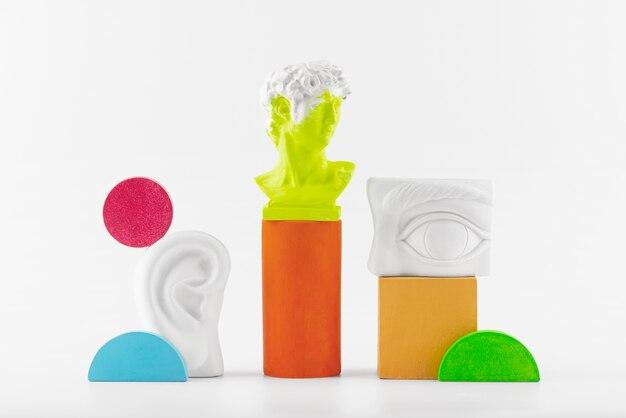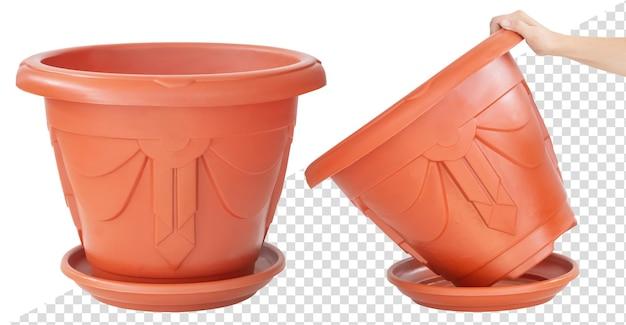In the world of pottery and ceramics, clay is the foundation of every masterpiece. But not all clays are created equal. Enter high plastic clay, a versatile and desirable type of clay that offers unique properties and endless creative possibilities.
In this blog post, we’ll explore what high plastic clay is all about and why it is highly regarded in the world of clay art. We’ll dive into the various types of clay, discover the reasons behind clay’s plasticity, and explore the strength and weaknesses of this fascinating material. So buckle up, clay enthusiasts, as we take a deep dive into the world of high plastic clay in 2023!
What Is High-Plastic Clay
High-plastic clay, known for its malleability and moldability, is an intriguing material widely used in pottery and ceramics. In this section, we’ll delve deeper into the fascinating properties and the artistry behind working with high-plastic clay.
The Play-Doh of the Pottery World
High-plastic clay is like the Play-Doh of the pottery world, but with a bit more sophistication (sorry, Play-Doh lovers!). It gets its “high-plastic” moniker from its ability to be easily manipulated and shaped. Think of it as the superstar of clay, ready to take on any form you desire.
A Highly Responsive Clay
Unlike its more stubborn clay counterparts, high-plastic clay is extremely responsive to the touch. It’s almost as if these clay particles have a personality of their own! When you push, pull, twist, or pinch high-plastic clay, it obediently follows your lead, making it a dream for sculptors and potters who enjoy working with intricate details.
The ABCs of High-Plasticity
So, what gives high-plastic clay its remarkable properties? It’s all about the particle size and composition. High-plasticity clays typically have smaller particles, allowing them to pack tightly together. This dense structure gives the clay its plasticity, making it easier to shape and mold without it collapsing or losing its form.
The Moisture Matters
Now, don’t let the word “plastic” fool you. High-plastic clay isn’t actually floppy like a plastic bag in the wind. Its plasticity relies on the perfect balance of moisture content. When the clay has the right amount of moisture, it becomes more elastic and can be easily manipulated. However, too much moisture and it becomes a slippery mess, and too little makes it stiff and uncooperative.
Taking a Spin on the Wheel
One of the most popular uses for high-plastic clay is on the potter’s wheel. Imagine a skilled potter gracefully spinning the wheel while their hands effortlessly coax the clay into a symmetrical shape. The malleability of high-plastic clay allows potters to create smooth curves and intricate patterns, bringing their artistic visions to life.
From Functional to Fantastic
High-plastic clay isn’t limited to functional pottery alone. Artists use this versatile clay to create breathtaking sculptures, intricate decorative pieces, and everything in between. Its ability to hold intricate details and be transformed into a wide range of forms makes it a favorite among creative souls craving endless possibilities.
Wrapping Up
High-plastic clay is the go-to choice for artists and potters who desire a clay that is both flexible and responsive. From its unique properties to its limitless potential, high-plastic clay plays a vital role in the world of ceramics, allowing artists to turn their visions into reality. So next time you marvel at a stunning ceramic piece, remember that it all started with a humble blob of high-plastic clay!
FAQ: What Is High Plastic Clay
What are the 5 types of clay
There are five main types of clay: kaolin, ball clay, fire clay, porcelain clay, and stoneware clay. Each type has unique properties and is used for different purposes in various industries.
Is high plasticity clay good
Absolutely! High plasticity clay is highly desirable for many applications. Its ability to be easily molded, shaped, and manipulated makes it an excellent choice for pottery, sculpture, and other artistic endeavors.
What is plastic clay used for
Plastic clay is used in a wide range of applications. It is commonly used in the manufacturing of ceramics, pottery, bricks, and tiles. Its high plasticity allows for intricate designs and details.
What is the weakness of clay
While clay has many strengths, it does have some weaknesses. One of the main weaknesses of clay is its susceptibility to cracking during the drying and firing processes. Additionally, clay can be quite fragile when not properly fired.
Why does my clay smell
If your clay has a peculiar odor, it may be due to the presence of organic compounds or impurities. These compounds can release gases during the firing process, resulting in the odor. However, properly processed and fired clay should not have a strong smell.
What does plasticity in clay mean
Plasticity in clay refers to its ability to be easily deformed, stretched, and molded without breaking. It is a measure of how flexible and workable the clay is. High plasticity clay has a greater ability to be manipulated and shaped.
Which clay is used for clay art
For clay art, the most commonly used clay is stoneware clay. It offers a good balance between plasticity, strength, and color variations. Stoneware clay is versatile and can be used for both functional and decorative pieces.
What are the 4 types of clay
The four main types of clay are earthenware clay, stoneware clay, ball clay, and kaolin clay. Each type has distinct characteristics and is used for specific applications, such as pottery, ceramics, and construction.
What is the difference between ceramic and clay
Clay refers to the raw material used to make ceramics, while ceramics are the finished products made from clay. Clay undergoes various processes, including shaping, drying, and firing, to transform it into ceramics.
What is the strongest clay
Porcelain clay is known for its exceptional strength and durability. It is fired at a high temperature, resulting in a dense and non-porous ceramic body. Porcelain clay is commonly used for tableware, bathroom fixtures, and decorative objects.
What are three properties of plastic clay
The three main properties of plastic clay are its ability to be easily molded, its flexibility, and its capacity to retain its shape when formed. These properties make plastic clay an ideal choice for sculpting and pottery.
Why clay is highly plastic
Clay is highly plastic due to the unique arrangements of its mineral particles. The small size of the particles and their ability to slide past each other allow clay to be easily shaped and molded, giving it its high plasticity.
What are the four properties of clay soil
Clay soil has four key properties: high water retention, poor drainage, high nutrient content, and compaction when wet. These properties can make clay soil challenging to work with in gardening and landscaping projects.
Is Clay a plastic
Clay is a type of fine-grained soil that is highly plastic when moistened. Its plasticity allows it to be molded and shaped without breaking. However, once clay is fired, it becomes ceramic and loses its plasticity.
What are the major types of clay
The major types of clay are kaolin, ball clay, fire clay, bentonite clay, and fuller’s earth clay. Each type has different compositions and characteristics, making them suitable for various industrial and artistic applications.
What is the enemy of clay
The enemy of clay is excessive moisture. When clay gets too wet, it becomes soft and malleable, making it difficult to work with. Additionally, over-watering clay soil can lead to poor drainage and compaction issues.
What Clay should I use
The type of clay you should use depends on your specific project. For pottery and ceramics, stoneware clay or porcelain clay are popular choices. If you’re sculpting, high plasticity clay, like ball clay, is recommended for easier manipulation.
What are the qualities of clay
Clay possesses several desirable qualities, including plasticity, malleability, and the ability to retain shape once formed. It also has good thermal insulation properties, making it suitable for kiln firing. Its natural color variations add to its aesthetic appeal.
Which clay is best for face
When it comes to skincare, bentonite clay is often considered the best. Bentonite clay has excellent cleansing and detoxifying properties and can help draw out impurities from the skin. It is commonly used in facial masks and scrubs.
What is clay made of
Clay is primarily composed of fine particles of minerals, such as alumina, silica, and water. Its composition varies depending on the type of clay and the geological conditions in which it forms.
Does vinegar dissolve clay
Yes, vinegar can dissolve clay to some extent due to its acidic nature. However, the dissolution process may be slow, and the effectiveness of vinegar on clay depends on various factors such as the concentration of the vinegar and the type of clay.
Why is clay slippery
Clay can feel slippery when wet due to the water molecules forming a lubricating film between the clay particles. This lubrication reduces friction and allows the particles to slide past each other easily.
What does vinegar do to clay
When vinegar comes into contact with clay, it can help break down and dissolve some of the clay minerals. This can be useful in certain applications, such as cleaning or removing clay residue from surfaces.
Is blue clay valuable
Blue clay can be valuable in specific contexts, especially for artists and ceramic enthusiasts. Blue clay is relatively rare and highly prized for its unique color. Its scarcity and aesthetic appeal can make it valuable in the art market.
What changes happen when you press clay
When clay is pressed, several changes occur. The clay becomes compacted and denser, reducing its plasticity and increasing its strength. Additionally, pressing can create texture, patterns, or imprints on the clay’s surface, enhancing its visual appeal.
What increases plasticity in clay
Several factors can increase the plasticity of clay. Adding water to dry clay makes it more pliable. Additionally, using clay with a higher clay content or adding plasticizers, such as ball clay or bentonite, can increase its plasticity.
Remember, clay is an incredibly versatile material that has been used for centuries in various art forms and industries. Whether you’re a pottery enthusiast or a professional ceramic artist, understanding the characteristics and properties of clay, such as high plasticity clay, will help you unleash your creativity and create beautiful works of art.

